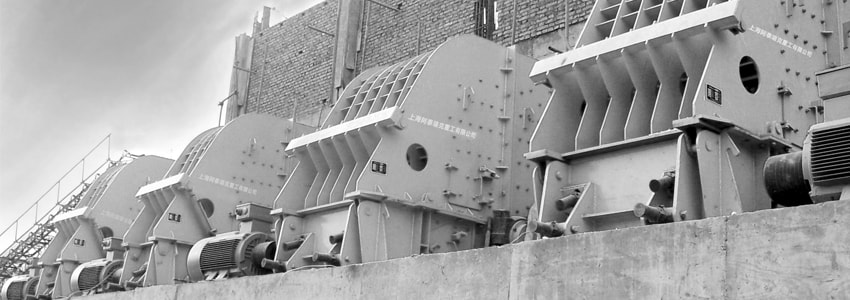During prolonged operation, the rotor and plate hammer of the impact crusher experience uneven wear due to friction and the counter impact of materials. This results in a gap between the plate hammer and the rotor contact surface. When the rotor rotates, the significant difference between its center of gravity and its rotational center causes additional centrifugal force, leading to vibration and premature bearing wear. It may also cause the shaft to bend or experience severe wear in certain areas, affecting the installation of the plate hammer. As a result, the plate hammer hangs and undergoes bending and shearing forces, shortening its lifespan. The plate hammer screws are prone to breakage and bending, further impacting normal operation.

1) When repairing the rotor body or replacing the plate hammer, it is essential to maintain the balance of the rotor components. To do this, prepare as follows:
a. Lift the crusher upper cover, remove the triangular belt, and clean the bearing seats and bearings at both ends.
b. After cleaning, add mechanical oil and rotate the rotor by hand until it moves freely and smoothly.
c. Observe the balance of the rotor during rotation.
d. Based on the imbalance of the rotor during rotation, determine the welding position and make marks.
e. Divide the length of the rotor into several sections, each approximately 200mm long, and mark them.
f. Remove the old plate hammer to be replaced, weigh the new plate hammers individually, and mark their weights with chalk.
g. Prepare hand grinding wheels, arc welding equipment, etc.
2) Steps for repairing the rotor and installing the plate hammer:
a. Using hand arc welding, repair the worn parts on the first section of the divided rotor in the same way as the entire circle.
b. When the welding repair reaches the original design size of the rotor, stop welding and use a hand grinding wheel to grind the side in contact with the plate hammer.
c. According to the static balance test method, observe the balance of the rotor. If there is still imbalance, continue to add weight at the original welding position using hand arc welding until the rotor is balanced.
d. Repeat the welding repair for the other divided sections of the rotor following the above steps.
e. Install plate hammers with similar or slightly different weights symmetrically around the repaired rotor to achieve better balance.
3) Key points for operation and maintenance:
a. Regularly check the wear or repair of the plate hammer, impact plate, protective plate, and rotor. Secure the connecting screws to prevent loosening and detachment.
b. Pay attention to whether there are any hard objects such as metal impurities mixed in with the materials fed into the machine. If the machine operates abnormally, stop it for inspection.
c. Feed materials evenly to prevent blockages and do not add materials larger than the specified size.
d. Do not open the machine's small door for maintenance when it is not completely stopped. After adjusting the damaged rotor and impact plate, ensure the screws on the impact plate are tightened.
e. After major equipment maintenance or disassembly and reinstallation of the rotor, ensure the rotor rotates flexibly and is well-balanced. Replace the impact plate simultaneously; otherwise, the unbalanced rotor will cause machine vibration.

